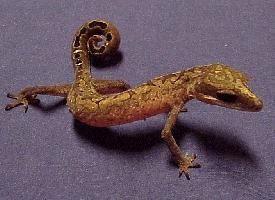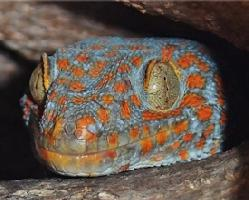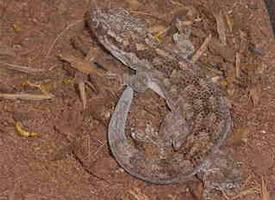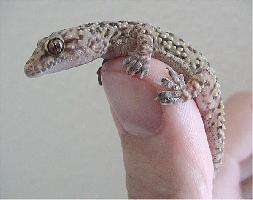
Poids et mesures
| Longueur | 18 cm |
|---|
Description de l'animal
The Cat Gecko, scientifically known as Aeluroscalabotes felinus, is a fascinating and somewhat elusive species of gecko native to the rainforests of Southeast Asia, including Malaysia, Thailand, Indonesia, and Singapore. This species belongs to the family Eublepharidae, which is characterized by their eyelids, a trait not common to all geckos. The name "Cat Gecko" derives from its cat-like behavior and appearance, including the way it curls up its tail around itself when resting, reminiscent of a cat's tendency to curl up when sleeping.Physical Description:
The Cat Gecko is a medium-sized lizard, typically reaching lengths of up to 8 inches (20 cm) from head to tail. They possess a unique physical appearance, characterized by their soft, velvety skin and a striking pattern of colors that can range from shades of brown and tan to reddish-brown, often with darker markings that provide excellent camouflage against the forest floor. Their underbelly is usually lighter, ranging from white to pale yellow. One of the most distinctive features of the Cat Gecko is its eyes; they have vertical, slit pupils that can expand or contract, which aids in their nocturnal activities. Their eyelids, a rare feature among geckos, allow them to blink and close their eyes, which helps keep their eyes clean and moist.
Behavior and Lifestyle:
Cat Geckos are nocturnal creatures, spending most of the day hidden in the dense foliage or under tree bark, emerging at night to hunt for food. Their diet primarily consists of insects and other small invertebrates. They are arboreal, meaning they spend a significant amount of their time in trees, and are excellent climbers thanks to their specialized toe pads that allow them to adhere to smooth surfaces.
The Cat Gecko is known for its shy and reclusive nature, often avoiding confrontation and preferring to stay hidden. When threatened, they may curl up their tail and body, mimicking the shape of a leaf or branch to evade predators. This behavior, combined with their ability to remain incredibly still, makes them difficult for predators to spot.
Reproduction:
Cat Geckos are oviparous, meaning they lay eggs. The female typically lays a small clutch of eggs, usually two, which she deposits in a safe and humid environment. The eggs are left to incubate, and the young are entirely independent upon hatching. The hatchlings are miniature versions of the adults, and they grow rapidly, reaching sexual maturity in about a year.
Conservation Status:
While the Cat Gecko is not currently listed as endangered, its habitat is under threat from deforestation and habitat destruction due to agricultural expansion, logging, and urbanization. Conservation efforts are necessary to ensure the survival of this species, including habitat protection and restoration projects.
In captivity, the Cat Gecko has become a popular pet among reptile enthusiasts due to its unique appearance and behavior. However, they require specific care, including a controlled environment that mimics their natural habitat, with appropriate humidity, temperature, and foliage for hiding.
In conclusion, the Cat Gecko (Aeluroscalabotes felinus) is a unique and fascinating species, with its cat-like behaviors, striking appearance, and nocturnal lifestyle. Despite being less well-known than some other gecko species, it plays a crucial role in the ecosystems of Southeast Asia, and efforts should be made to protect this remarkable creature and its habitat for future generations to appreciate and study.
Animaux similaires
Nouvelles photos d'animaux
Top 10 des animaux
- Dolphin gull (Leucophaeus scoresbii)
- Diana monkey (Cercopithecus diana)
- Moustached guenon (Cercopithecus cephus)
- Galápagos tortoise (Geochelone nigra complex)
- Russian tortoise (Testudo horsfieldii)
- Japanese macaque (Macaca fuscata)
- Stone loach (Barbatula barbatula)
- Common flying dragon (Draco volans)
- Greek tortoise (Testudo graeca)
- Vendace (Coregonus albula)


